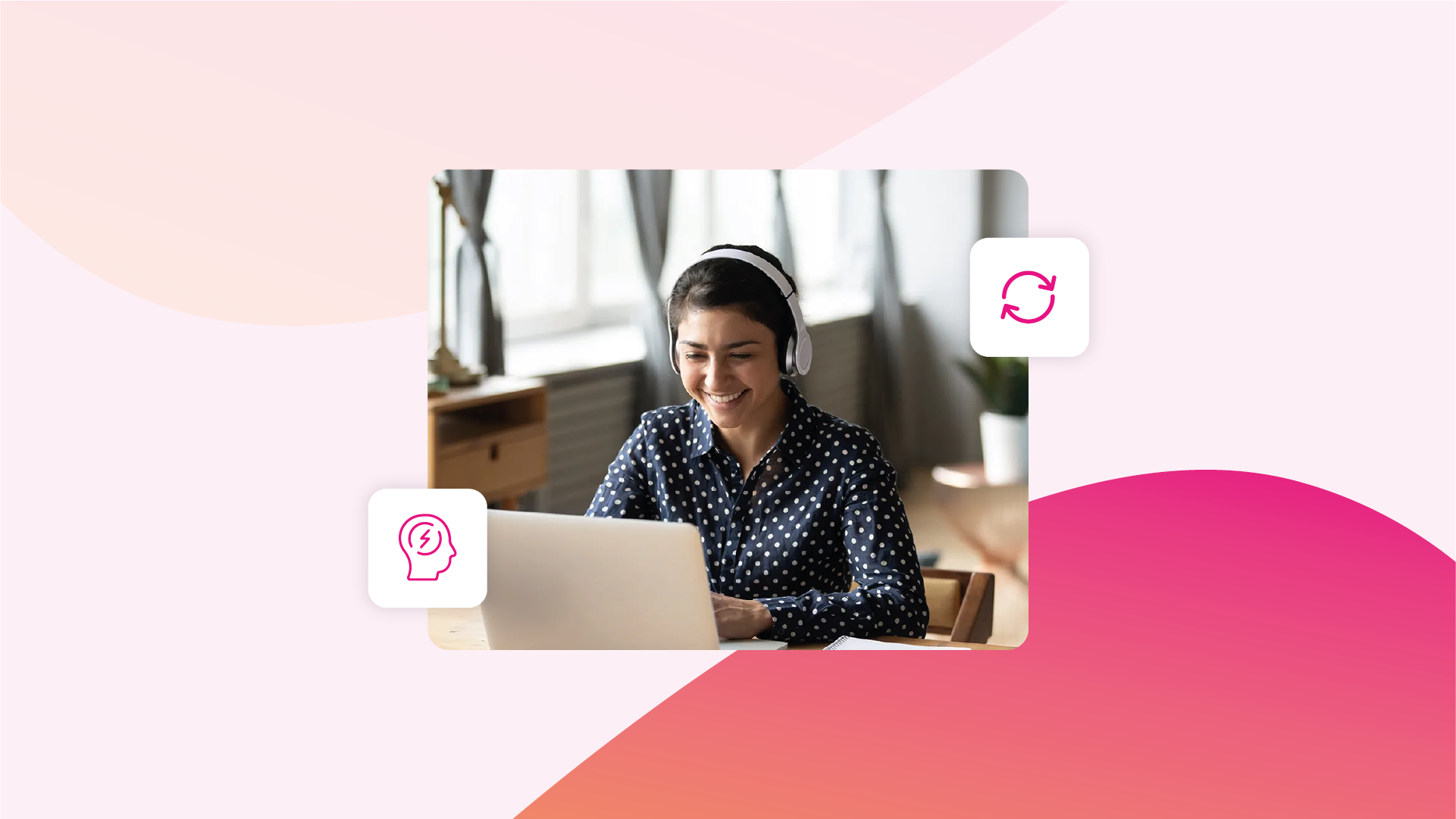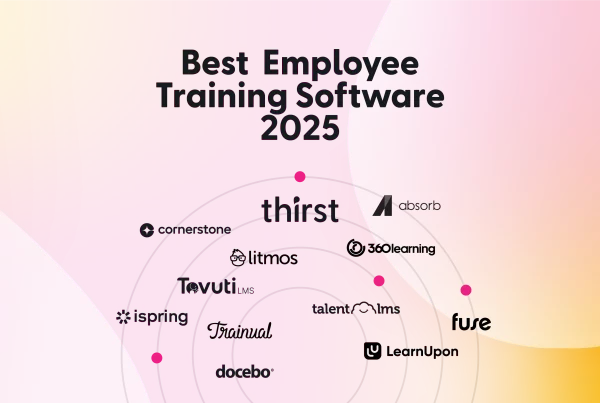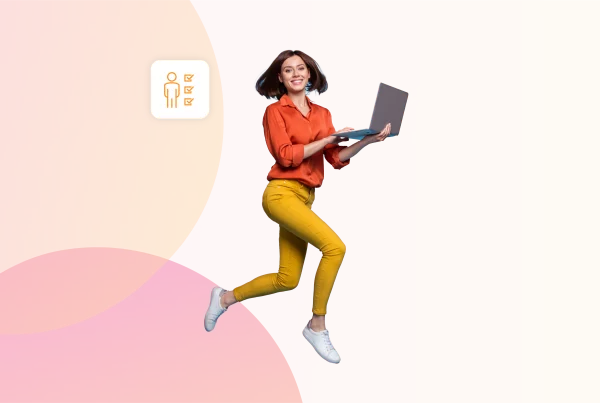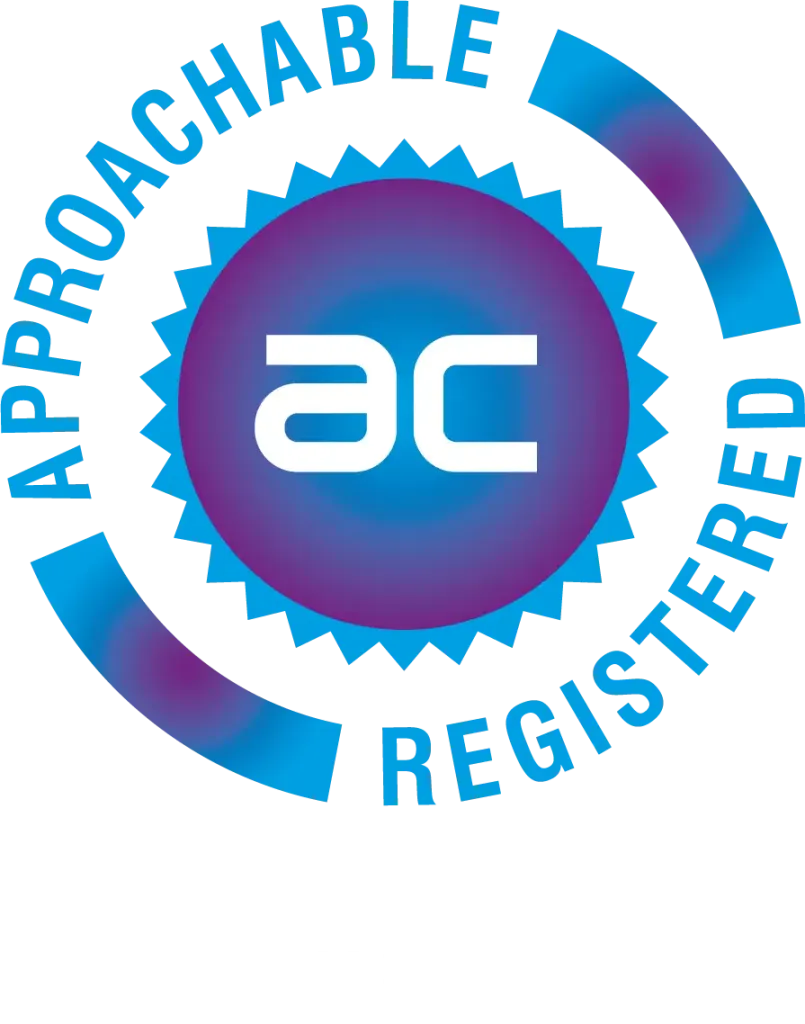Organisations the world over strive to optimise their L&D processes.
After all, an educated, experienced workplace is a happy, productive workplace. 😊
A workplace with a rudderless L&D strategy will fail to drive learner engagement.
Essentially, your corporate L&D should not be an afterthought. It should be at the top of your agenda. After all, the ongoing success of your organisation depends on everyone’s skills. The success of any L&D strategy you implement is paramount.
Successful L&D is not linear. It’s not a knowledge gap—L&D—end.
A continual, circular path, a loop, is one where learners continually evaluate, assess, and improve how knowledge is acquired and retained. It’s a loop. 🔄
Below is a look at this learning loop in a little more detail. 👇
What is a learning loop?
You’ve undoubtedly heard about learner engagement.
Actions taken to affect change. experiences that accelerate performance. Often referred to as a cycle or loop, this “learning process” has been long championed by the education sector as an effective means of knowledge retention.
This learning loop is highly effective in driving user engagement. It’s unsurprising that this methodology has filtered from educational learning to commercial learning.
There are four key actions in a learning loop. These are: 👇
Learning or acquiring and retaining new knowledge. Sometimes known as the “instruction phase,” commercial L&D can be completed in either planned lessons or bite-sized chunks in both formal and informal settings. 🧠
Application or demonstrating how your people will put their newly acquired knowledge into practice. This is done either through an assessment, like a short quiz or in-depth examination, or by applying the knowledge acquired to their day-to-day role.⚡️
Feedback is gaining an understanding of how the learners felt and how successful the learning process has been. Feedback sessions can be delivered online or in person from a line manager or dedicated L&D member of staff. 🗣️
Reflection or analysing what could be done differently in the future to enhance learning and knowledge retention. Formal or informal reflection can be conducted in small or large groups. Areas that could be discussed include discussing the experience with course leaders or distributing, filling out, and collecting questionnaires to prompt learners to record their thoughts on the L&D process. 💭
What are the five steps of the learning loop?
There are five steps in the learning loop. Remember, there is no real end to the learning loop process. The moment one step ends, the next begins.
It’s a cycle. One that repeats over and over again throughout the learning process. 🔄
Below are the five steps in the learning loop:👇
1️⃣ Step one: awareness, assessment, and analysis
Identify learning objectives: the first stage of the learning loop is to define what you want learners to achieve once the loop has been completed. Acquiring new knowledge and skills would be one outcome.
Assess prior knowledge: another approach to step one of the learning loop is to gain insight into existing knowledge and skills to help tailor the learning experience to what learners want or need.
2️⃣ Step two: design
Develop instructional materials: the next stage is to create content and instructional materials that align with learning objectives. This could include written materials, multimedia resources, interactive activities, and assessments.
Choose appropriate instructional methods: once you’ve created the content, you’ll need to choose the instructional methods that best suit the content and preferences of the learners. This could include lectures, discussions, hands-on activities, simulations, or a combination of different instructional methods.
3️⃣ Step three: implementation
Delivery of instruction: the third stage is to actually deliver the instructional content to learners. This could be in an in-person classroom setting or online through, for example, a series of webinars or blended learning.
Facilitate learning activities: encourage learner engagement through various activities. This could involve group discussions, practical exercises, or other interactive elements.
4️⃣ Step four: assessment and feedback
Evaluate learning: assess how well learners are grasping the material. You can do this by running tests, such as quizzes, exams, monitoring practical application, or by administering some other way of assessing learners.
Provide feedback: give learners constructive feedback. Praise them when they deserve it and encourage them to not give up and explore a topic they are struggling to grasp in more detail.
5️⃣ Step five: reflection and iteration
Evaluate the effectiveness: analyse the overall effectiveness of the learning loop. Note if it met the learning objectives and if there were any unexpected challenges.
Iterate and improve: once you’ve evaluated performance, make any necessary adjustments to hone the learning process. You could refine the content, change instructional methods, or address any issues identified during the learning process.
What is double-loop learning?
Double-loop learning encourages the organisation to think deeper about the initial outcomes of learning processes. To look at the broader system and not only the narrow, surface-level results. To challenge instincts and rethink any quick assumptions or decisions.
This involves “thinking outside the box,” critical thinking, and creative thinking, which helps people understand why one solution is better than another to, for instance, solve a problem. 😉
Let’s say that a piece of work has not been completed for a client within agreed timescales. A discussion about whether the deliverables were reasonable is called double-loop learning.
What is the result of this double-loop learning? Greater insight into the circumstances. Maybe a change of deadline in the future. even an improved relationship because both parties have a better understanding of the whole picture. 🚀
It’s when the rules are changed.
What is triple-loop learning?
Triple-loop learning encourages people to reflect on how they learned in the first place. how rules benefit learners and whether they should be changed to further bolster successful learning.
This benefits learners because they’re asked to think about their learning experiences. How successful the learning processes are. If they could be improved, and whether our own assumptions or perceptions helped or hindered the experience. 💡
Let’s say that you have engaged in a dialogue with a client…
You both discuss the topic of conversation in detail from similar or opposing perspectives. At the conclusion of the conversation, both you and the client exchange your views about what you’ve both learned and how you’ve arrived at your individual conclusion. This is triple-loop learning.
It’s when learning how you’ve arrived at a conclusion that is just as important as the conclusion itself.
Examples of learning loops
Understanding learning loops can be a challenge. But don’t worry. Below, we’ve outlined clear examples to help your organisation fully understand what they are and how your organisation can clearly understand the differences between single, double, and triple learning loops in the workplace.
Single learning loops
An example of single-loop learning might be if the release of that long-awaited new software feature (the outcome of an action) is delayed. Your organisation’s software team delivered the feature.
Single learning loops will only examine a specific scenario. The result might be that it’s impossible to deliver the new software feature in the agreed-upon time. The resulting action is to add more time to make sure that any other features are released without delay.
Double learning loops
Now, let’s take the same scenario (the delayed release of the software feature) and apply a double learning loop to it, looking a little deeper into the reasons for and assumptions why the software feature was delayed.
You might notice that, for example, the software feature’s approval process is too lengthy, that you needed more team resources to hit the deadline, or that you encountered delays in the design, build, and testing of the feature due to unforeseen circumstances that, inevitably, delayed the software feature’s release.
By understanding exactly why the software feature launch was delayed, you can then make organisational changes to stop any future delays. 🙌
Triple learning loops
Let’s review the delayed release of the software feature for one final time and, this time, apply a triple learning loop to it to better grasp what can be learned to help any future software feature releases.
In this instance, you might, for example, accept that the delayed release was a consequence of unforeseen circumstances. But you still want to avoid any future delays from, let’s say, disrupting productivity.
A triple learning loop will get the whole team involved to learn how people think and feel about why there was a delay in the release, evaluating the circumstances—for example, maybe there was too much pressure on one person or team—and how this can be avoided in the future through a better understanding of the processes and culture.
What are the challenges of learning loops?
Learning loops offer significant L&D benefits. This is clear. However, we’d be naive to ignore the challenges organisations face when implementing this methodology.
The good news is that awareness of such challenges and implementing contingency plans gives people the chance to take appropriate measures to address and resolve any issues before they arise.
Below are the key challenges that organisations must address to optimise their L&D strategies:👇
✅ Low levels of employee commitment
To be successful, organisations must make sure that their employees are engaged, committed, and motivated. Time must be well managed, and any learned theory must be reinforced with day-to-day actions.
Low levels of employee commitment can be combated by offering gamification activities, rewards incentives, and recognition for a job well done.
✅ Not wanting to change
Integrating organisational learning loops into your organisation’s culture isn’t difficult. Still, having a little pushback from colleagues isn’t unusual. They could be happy with the status quo. They could be part of an analogue generation and find it quite a challenge to adopt a digital approach to, for instance, LXP. But don’t forget, this is normal.
Good organisations know that effective communication and awareness are key to helping people across all levels of the organisation adapt to change.
✅ Not measuring performance
The only way you can tell if change has had a positive impact on any learning loops is by measuring performance. It’s really that simple. However, this too can be a challenge.
The good news is that you can get performance measured down cold and achieve something valuable within organisations: trust. When measuring performance loops, it’s essential that you first establish clear metrics and define performance indicators that reflect your goals.
If you want to achieve better performance, be sure to test employee knowledge. If you want to win more sales, look at sales figures before and after LXP adoption.
After all, if you don’t measure performance, how do you know how successful the changes have been?
How to implement learning loops
Given the rate at which organisations are forced to evolve, adapt, and innovate in today’s working environment, implementing L&D that actually works has never been more important.
For organisations to thrive in such a tough environment, they need to develop strategies to continually improve their products, services, and cross-department processes.
Learning loops are essential to helping organisations collect, analyse, and act on valuable data and insights from colleagues and customers. They allow for vital feedback to be gathered, which will help organisations make better decisions in the future. 😉
By systematically integrating operational feedback, organisations can gain valuable performance insights, identify areas for improvement, and foster a culture of continuous learning and innovation.
There are three steps to successfully implementing a learning loop within any organisation. These steps are outlined below: 👇 👇
Step 1: Gather feedback
The first step is to gather useful, specific feedback about the learning experience. You can distribute online surveys to participants via email, social media, or a URL link and ask them to provide personal feedback.
Be sure to keep our surveys simple. Multiple-choice answers don’t take up too much time and encourage participants to spend a few minutes filling in the answers. Ask questions that are important to sustained business-wide success and continued growth.
Step 2: Review feedback
The next step is to review all feedback to gain insight into the opinions learners have of the learning process. You might uncover better, more effective strategies to implement, ways to pivot the course content to achieve a better outcome, or even organisational benefits that you’ve previously not considered.
Don’t forget to review both positive and negative feedback and the causes for and reasons why people share their feedback. You may also uncover repeated comments or ongoing issues that, once addressed, will drastically improve performance. 🙌
Step 3: Use feedback
The final step is being able to appropriately respond to all feedback. Remember, any feedback you gather is only as useful as how you can use it to affect positive change. The right actions should be taken by the right teams to affect positive change.
Regular reviews and the application of feedback will promote a culture of change. Honest dialogue will cultivate camaraderie. Transparent recognition of actions, together with clear goals for individuals, departments, and the business as a whole, will promote togetherness and foster loyalty and success.
Use learning loops, and you’ll achieve your goals!
Learning loops are the bedrock of sound organisational success. 🚀
This circular approach, one that allows learners and managers to continually evolve, evaluate, assess, and improve training, will only improve the quality of your L&D and organisational performance over time.
Are you interested in learning more?
Get in touch with Thirst today, and you’ll be able to leverage ground-breaking AI technology and a learned methodology to help your business thrive. Our AI-powered learning platform empowers L&D professionals to accelerate their learning culture, talent acquisition, leadership and development, and internal mobility. 🙌
The bottom line?
You’ll be able to leverage learning loops to drive learner engagement and achieve an organisation capable of scaling its operations to meet the evolving needs of your business.
Book a personalised demo today.
For more e-learning insights, resources and information, discover the Thirst blog.
You may also enjoy:
The Ultimate Guide to Sharing Best Practices | How to Choose the Right AI-Powered LMS for Your Organisation | A Comprehensive Guide to Learning Evaluation Models







